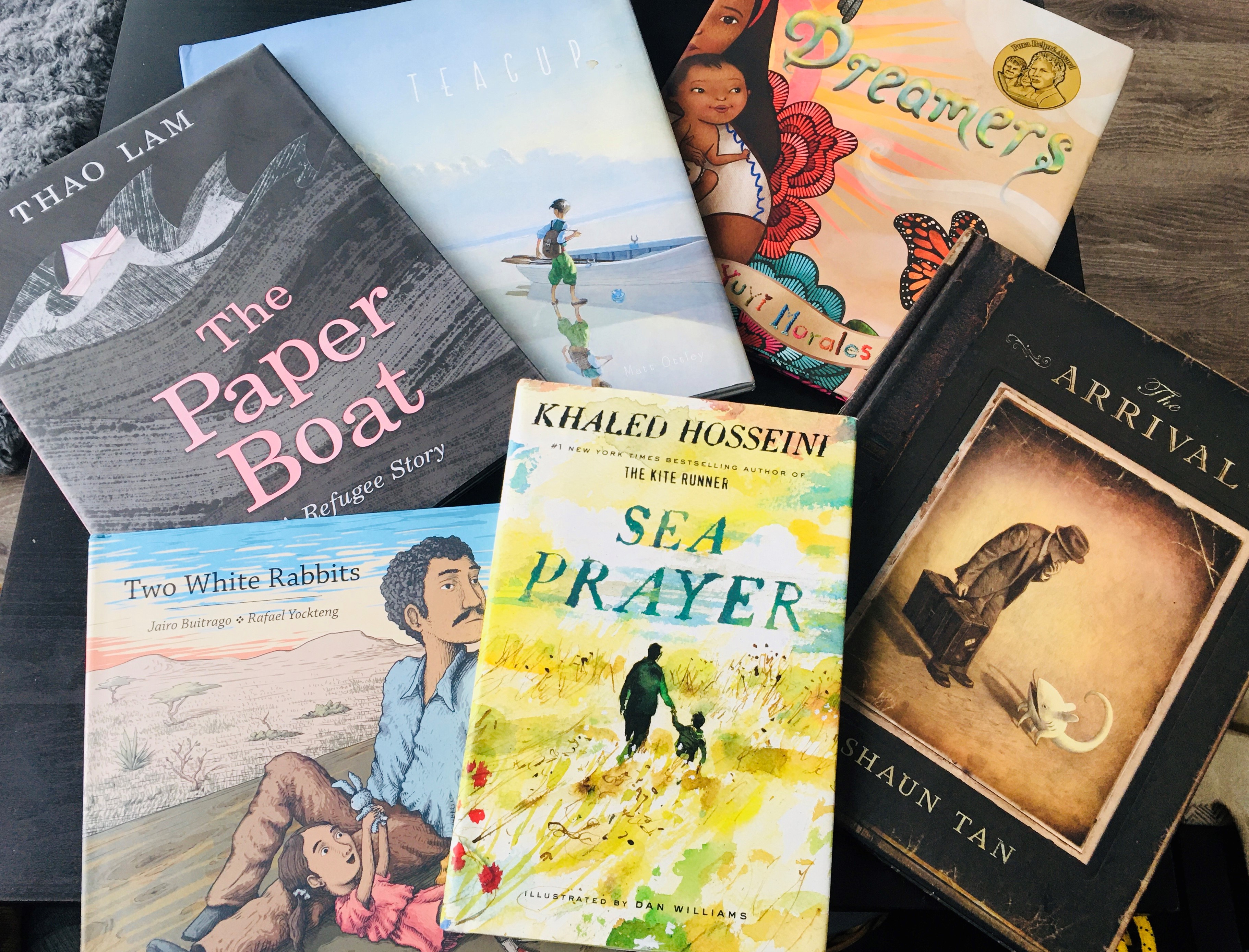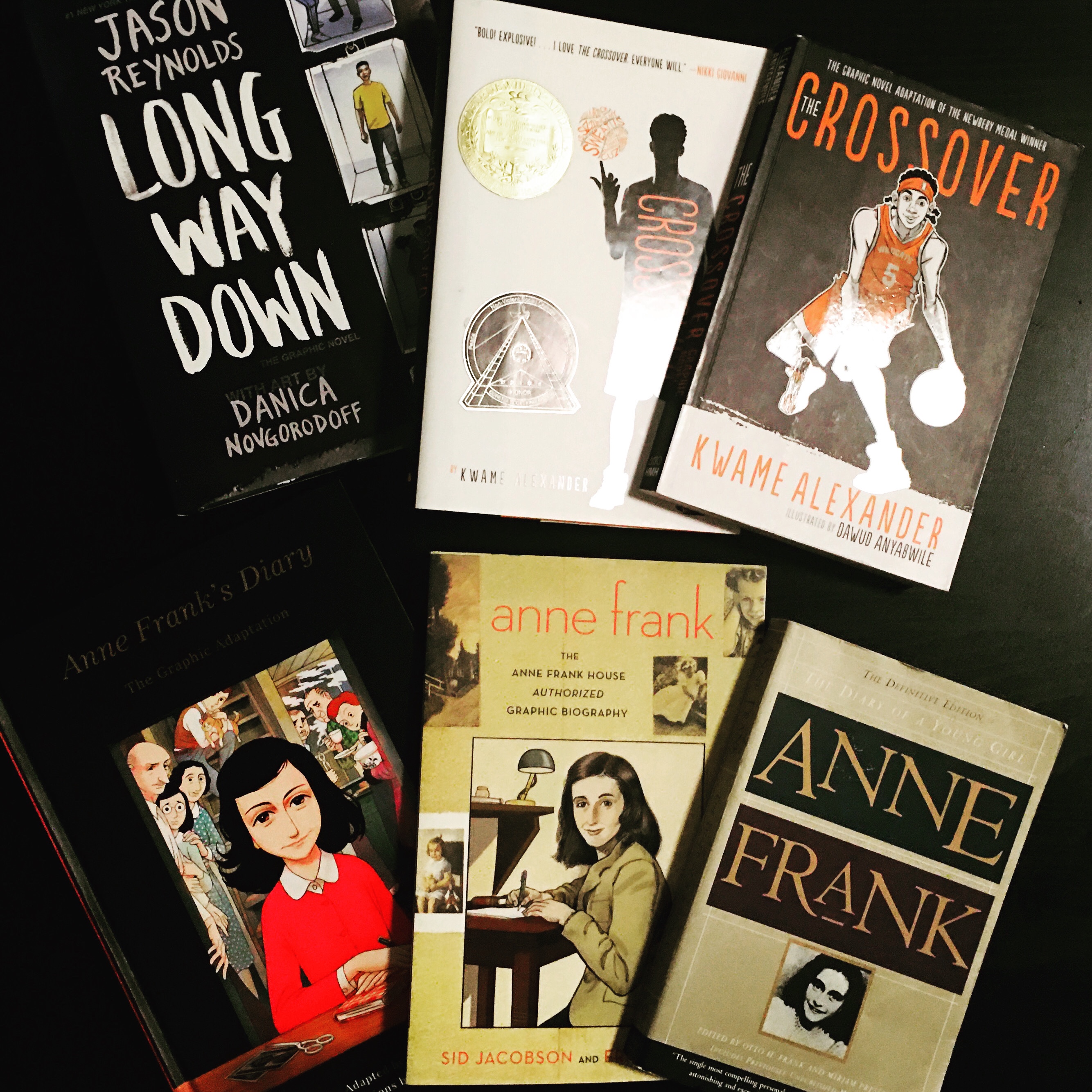Establishing a Foundation
During our Humanities unit on Migration, after reading Refugee by Alan Gratz as a whole class novel, my students read a choice migration novel from a selection of titles. There are many new, exciting migrations narratives being published. I will definitely be adding more titles for next year. The final project was to adapt a key chapter into a comic. For students who chose to read a graphic novel, they will adapt a chapter to prose or verse. In this blog post, I will share my process for this final project.
 Picture books are a vital literacy tool in my classroom and help build literacy skills. We began each class reading a picture book for this unit, discussing themes, and diving into the symbolism and representation. It was essential to collect a library of titles that personalize the complex issues of migration. Here is a link to my growing list. By incorporating picture books, students experience numerous stories in an accessible way. Students can share what they notice, explain what they think it means, and how the creator connects with them, the reader. These experiences create a foundation before moving on to comics.
Picture books are a vital literacy tool in my classroom and help build literacy skills. We began each class reading a picture book for this unit, discussing themes, and diving into the symbolism and representation. It was essential to collect a library of titles that personalize the complex issues of migration. Here is a link to my growing list. By incorporating picture books, students experience numerous stories in an accessible way. Students can share what they notice, explain what they think it means, and how the creator connects with them, the reader. These experiences create a foundation before moving on to comics.
While students read their second migration novels, I begin introducing basic comics vocabulary and grammar. Scott McCloud’s Understanding Comics is the teaching bible for comics but needs modifying for a younger audience. To explain each concept, I pull examples from popular middle-grade comics. Often, my mini-lessons spark interest, and copies fly off the shelves during independent reading. So, be sure to have copies on hand.
 Once students have a solid foundation, we move to mentor texts analysis. Depending on the time and your students, select appropriate texts. Since I have a range of novels including prose and verse, I chose A Long Way Down by Jason Reynolds and Diary of a Young Girl by Anne Frank. You could also include adaptations of The Crossover by Kwame Alexander, Speak by Laurie Halse Anderson, A Wrinkle In Time by Madeleine L’Engle, Anne of Green Gables by L.M. Montgomery, The Golden Compass by Philip Pullman, Coraline or The Graveyard Book by Neil Gaiman, and others. After guiding students through the generation of potential questions, students reflect on the adapter’s choices and decision making. Potential questions can include:
Once students have a solid foundation, we move to mentor texts analysis. Depending on the time and your students, select appropriate texts. Since I have a range of novels including prose and verse, I chose A Long Way Down by Jason Reynolds and Diary of a Young Girl by Anne Frank. You could also include adaptations of The Crossover by Kwame Alexander, Speak by Laurie Halse Anderson, A Wrinkle In Time by Madeleine L’Engle, Anne of Green Gables by L.M. Montgomery, The Golden Compass by Philip Pullman, Coraline or The Graveyard Book by Neil Gaiman, and others. After guiding students through the generation of potential questions, students reflect on the adapter’s choices and decision making. Potential questions can include:
- What is different? What details are kept? What details are omitted?
- Is there a perspective change?
- What is the mood? Is it different? How is it created (color)?
- What text is kept? What is changed? What is omitted?
- How is the text used in the graphic adaptation? Dialogue versus caption versus sequential images?
- Diction: Are there changes in word choice?
- Is the sequence of events in the plot the same or different?
- Are all the characters the same? Included? How are they depicted? Is the characterization the same?
- What symbols or images come from the original text?
- What color choices are made?
- How do the images help the reader understand the story?
- How are emotions expressed? Do the two versions match?
- Setting: How is it portrayed? Is it the same in both versions?
Check back for Part II: Work In Process.
